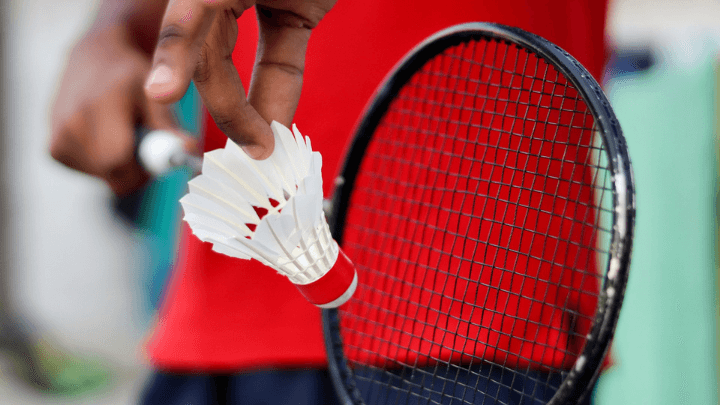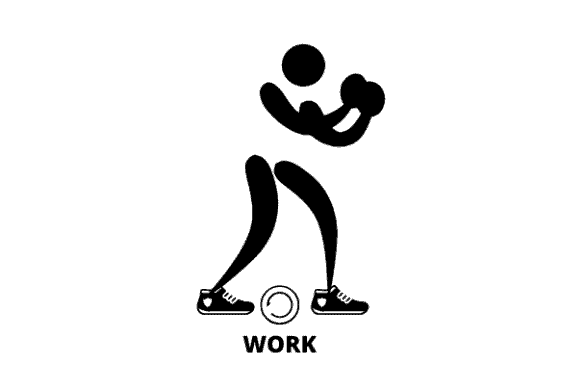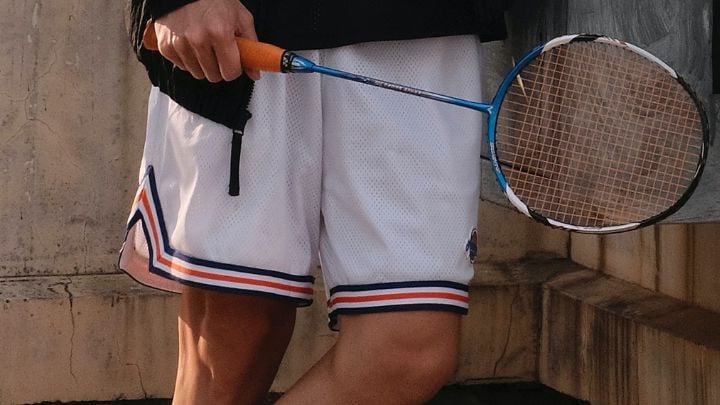This is the most comprehensive guide about the jab on the internet.
If you want to:
- Master the basics and the most advanced jabbing techniques
- See detailed videos and images which actually show you what to do
- Discover over 5 different variations of the jab
Then you’re going to love this resource.
What we will be covering:
- What is a jab?
- Why is the jab important?
- How do you throw a jab?
- What are the benefits of the jab?
- Is the jab the most important punch in boxing?
- How can you make a jab more powerful?
- Common jab mistakes
- Which arm do you use for the jab?
- What muscles are used in a jab?
- What’s the difference between a jab and a straight?
- What are the 6 punches in boxing?
- Do you jab with your weaker hand?
- Can a jab knock somebody out?
Ready to rumble?
Let’s dive right in.
What is a Jab?
A jab (also known as the ‘number 1’) is one of the 6 punches in boxing (jab – 1, cross – 2, lead hook – 3, rear hook – 4, lead uppercut – 5, rear uppercut – 6).
It is a quick, sharp, and effective punch which comes from the arm that is closest to your opponent (left arm for orthodox fighters, right arm for southpaw fighters).
Why Is the Jab Important?
The jab is used to find your range, set up punch combinations, stun opponents, defend against an aggressive fighter, and close the distance.
A jab for a boxer is like a hammer for a builder, without it, the job would be harder.
How Do You Throw a Jab?
There are multiple ways to throw a jab, so I’m going to show you all the variations from the most basic to the most advanced:
- Standing jab (beginners)
- Power jab step (beginners)
- Half jab (intermediate)
- Jab to the body (intermediate)
- Double jab (intermediate)
- Head off the line jab (advanced)
- Spear jab (advanced)
Note: While there are different levels of skill required for each jab variation, they are all important to master whether you’re a beginner fighter or seasoned pro.
How to Throw a Standing Jab (Easy)
Step 1. Standing in your boxing stance, with your hands up by your chin, knees slightly bent, elbows tucked in, relax your body, and put one foot in front of the other (left foot forward – orthodox, right foot forward – southpaw), hips-width apart as you can see in the image below:
Step 2. Keeping your weight centred, sit with your knees slightly (don’t sit if you are the taller fighter) as you throw your jab in one straight line from your chin to your opponents face. Quickly exhale as you punch, and clench your fist at the end. Really focus on relaxing your shoulders.
Step 3. Focus on rotating your arm throughout the punch. As you can see in the GIF above, my hand starts with my thumb pointing up to the ceiling. As I throw the punch, you can see that the palms of my hands are facing down to the floor. The way I was able to do this was by internally rotating my shoulder, elbow, forearm and hand from start to finish.
Step 4. With your jabbing arm fully extended out in front of you, bring it back to your starting position as fast as possible, keeping your elbows tucked into your body and your hand protecting your jaw.
How to Throw the Power Jab (Easy)
Step 1. Get into your boxing stance, as described in ‘step 1, basic standing jab’.
Step 2. Bring your front foot forward one step as you jab at the same time, exhaling as you go. Your back foot should immediately follow this action (see GIF above).
Step 3. Quickly bring your extended arm back to your chin, keeping your balance centred and your elbows tucked in. Your opposite arm should be protecting your hand throughout the punch.
Step 4. You can either step back at this point with your back foot leading, or you can stay where you are and throw a follow-up combination.
How to Throw the Half Jab (Intermediate)
Step 1. Get into your boxing stance, as described in ‘step 1, basic standing jab’.
Step 2. Keeping the majority of your weight on the back foot, bring your front foot forward and throw a quick, straight jab at the same time, quickly exhaling as you punch. Ensure that your back foot stays planted on the ground.
Step 3. Quickly bring both your extended arm and front foot back to your original boxing stance to avoid your opponents counter.
How to Jab to the Body (Intermediate)
Step 1. Get into your boxing stance, as described in ‘step 1, basic standing jab’.
Step 2. Crouch down low by bringing your front foot forward (approximately 2 feet) and throw your jab to your opponent’s solar plexus.
Step 3. Push off the front foot and return to your original boxing stance. Withdraw your extended arm at the same time.
How to Do the Double Jab (Intermediate)
Step 1. Get into your boxing stance, as described in ‘step 1, basic standing jab’.
Step 2. Keeping the weight on your back foot, bring your front foot forward and extend your arm out to jab your opponent (your back foot must follow). Quickly exhale as you punch.
Step 3. As soon as you have stepped forward, step forward again as though you’re stepping on hot coals (this should be a really quick movement) and throw your second jab.
Note: The second jab should be the most powerful of the two if you’re looking to connect with it.
How to Do the Head Off the Line Jab (Advanced)
Step 1. Get in your boxing stance, looking active.
Step 2. Wait for your opponent to lift their shoulder and throw their straight punch.
Step 3. Slip to the right (if you’re orthodox) by bending your knees and throw your own jab at the same time (see above). Quickly exhale as you punch.
How to Do the Spear Jab (Advanced)
Step 1. Get in your boxing stance, looking active.
Step 2. Wait for your opponent to lift their shoulder and throw their straight punch.
Step 3. Slip to the left (if you’re orthodox) and jab upwards, externally rotating your shoulder and pushing your opponent’s nose backwards as you exhale. Rotate your feet at the end for more power.
Note: This will look like a straight arm uppercut and it can be an effective counter if pulled off.
Like these jab variations? Click to tweet them!
What Are the Benefits of the Jab?
The benefits of the jab include the ability to:
- Set up punches
- Defend against an aggressive fighter
- Find your range
- Stun your opponent
- Throw a safe punch
- Close the distance
Is the Jab the Most Important Punch in Boxing?
There is no ‘most important punch in boxing’ because the other 5 punches can be more effective in certain situations.
For example, when you’re in range, the jab wouldn’t be the most important punch in boxing.
It’s a bit like a builder and his toolbox.
Yes, you could argue that the screwdriver he has is the most important tool for a particular job, but that builders hammer and nails can be just as important.
On the other hand, the jab is the most thrown punch in a boxing bout, and it can allow you to set up combos, find your range, and close the distance. But that doesn’t mean it is the ‘most important’ tool in your arsenal, in my opinion.
How Can You Make a Jab More Powerful?
You can make a jab more powerful by improving your technique. It takes years for a fighter to master the jab, but with practice, comes great power.
How do you improve your jab technique?
Make sure to carefully read the instructions on how to jab above and avoid the following common jab mistakes:
Common Jab Mistakes
Read this entire post dedicated to the most common jab mistakes.
Summary:
- Chicken wings: Punching with your elbows sticking out (like a chicken).
- Winding-up the jab: Winding up the jab in the hope to increase power.
- Jabbing in the pocket: You’re unable fully extend your jabbing arm, making it a weak punch that leaves you exposed.
- Jabbing across your body: This will put you off balance and reduce the amount of power you can produce.
- Not rotating your arm: You will generate a lot more power and prevent injuries if you rotate at the end of the punch.
- Overcommitting: Overcommitting will put you off balance, and invite your opponent to hit you cleanly.
- Jabbing too slow: If you have done everything above right and it’s still too slow, brush up on your boxing footwork by reading this guide here.
Which Arm Do You Use for the Jab?
The arm you use for the jab is the arm that is closest to your opponent in your boxing stance.
So, if you are a southpaw fighter (right foot forward), you’d use your right arm to throw the jab.
If you are an orthodox fighter (left foot forward), you’d use your left arm to throw the jab.
What Muscles Are Used in a Jab?
The major muscles used in a jab include:
[table id=1 /]
What’s the difference between a jab and a straight?
The difference between a jab and a straight is as followed:
Jab – A jab is a quick and straight extension of your arm closest to your opponent in your boxing stance
Straight – A ‘straight’ is another name for a ‘cross’, or ‘right-hand’. The straight is thrown with the opposite arm to your jab and follows the jab in a 1-2 punch.
What Are the 6 Punches in Boxing?
The 6 punches in boxing include:
- Jab
- Cross
- Lead Hook
- Rear Hook
- Lead Uppercut
- Rear Uppercut
Do You Jab With Your Weaker Hand?
You jab with your hand that is closest to your opponent in your boxing stance. This could either be your strong hand or weak hand depending on whether you are fighting orthodox (left arm in front) or southpaw (right arm in front).
Can a Jab Knock Somebody Out?
Yes, a jab can sometimes knock people out.
For example, Liam Williams knockout out Kris Carslaw with a jab in 2018:
However, in the majority of cases, the jab will only stun an opponent and help you set up further combinations.
Conclusion
I hope you have enjoyed this guide to the jab, and that you use it with skill, precision, and caution.
Now I’d like to turn it over to you:
- What is your favourite jab variation?
- Who do you think the best jabber is?
- Perhaps you have another question about the jab?
Either way, let me know by leaving a comment below or by direct messaging me on Instagram here.








